Three ways the Light L16 fails in its attempts to be the photojournalist’s camera choice
posted Wednesday, February 28, 2018 at 8:00 AM EDT
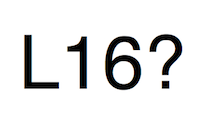
In the past weeks, Light announced a program called "The Depth Collective." The goal is to offer financial help to photojournalists around the world who wish to use the Light L16 in their storytelling. Light goes on to talk about the importance of keeping a low profile, being there to capture moments that matter, and creating images that can change the world.
"Anyone can take a picture, but not everyone can capture one that matters."
This is the quote that leads in to Light's latest endeavor to push their L16 camera, and I immediately stuck on it because I'm not entirely certain the Light camera can live up to that statement.
I'll try and explain, as I think the Light L16 fails in three major areas and those failures preclude it from being that great photojournalism tool that Light claims it to be.
Failure: Image Quality
"Photo reportage can become an even greater risk when its primary tool—a DSLR camera—is blatantly obvious. In the past few years, we’ve seen some photojournalists swap their DSLRs for iPhones to stay inconspicuous in their reporting—but they sacrifice quality to do so. The Light L16, however, packs professional-quality power into a compact frame that can be easily concealed." -Light.co, The Depth Collective
Light wants to replace the DSLR, or even larger mirrorless cameras, and to do so needs to lean on what makes its product superior. The Light's biggest selling point has been its size and portability, so naturally this fits right in to what would attract a photojournalist. It's a small, thin and easily stowed device. It's inconspicuous and promises to deliver image quality that exceeds camera phones and, as evidenced by the statement above, even DSLRs. If that were the case, this camera would change everything.
But Light states that they don't agree with the move to mobile phone shooting because photographers have had to sacrifice quality in order to achieve that inconspicuousness. They claim their L16 is the answer.
Except the L16 produces such incredibly awful final images that it would be difficult to keep a straight face while claiming it to be a cut above cell phones. It's not all about photo image size or even dynamic range here, it's about the way the image is being created and how it appears to the viewer.
To illustrate, I want to use a couple photos from Light's own blog post on photographer Aaron Wilson, and his mountain photography.
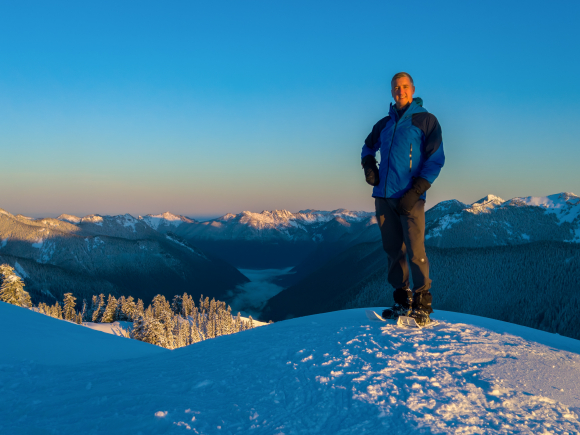
The post leads with this portrait of Wilson, and it's immediately apparent to anyone looking even somewhat closely that something is... wrong. Off. The L16 uses multiple lenses to composite one image. One of the foreseeable problems with this method would be inconsistencies with depth of field. It's one thing to miss focus, but it's entirely another to see two objects in the same focal plane and still hit and miss focus.
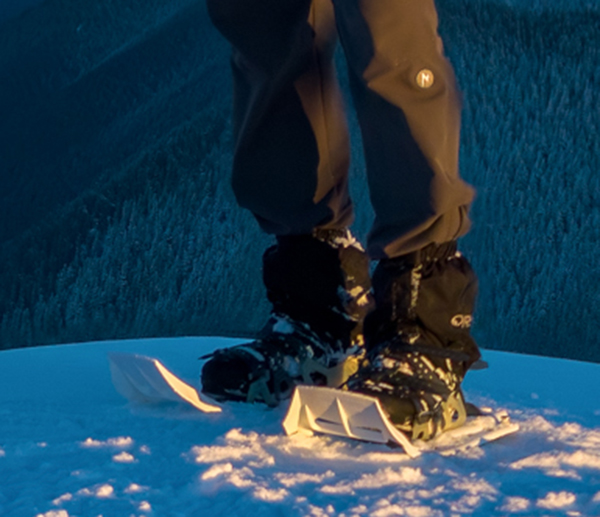
Look at Wilson's feet. The boot and snow shoe are both clearly tack sharp. Then, slowly scroll up and you'll notice that around his knee, things start to get strange. Focus is lost, then around his stomach it comes back a bit, and then on his face it's gone again.

All this, and yet the batch of trees on the left side of the photo are all tack sharp. And the mountains behind him.
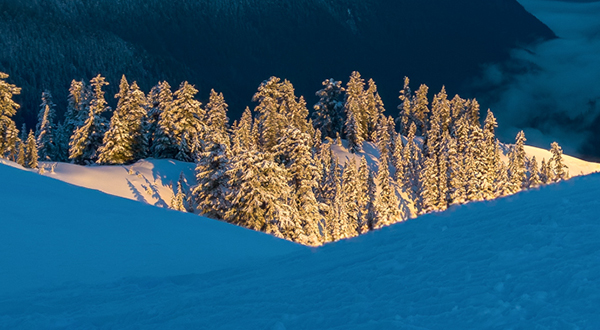
It would be one thing if focus was just missed and the background was just the accidental focus, but since his feet are tack sharp, you can't blame missed focus. The result is as if someone started with a human body and attempted to force an "uncanny valley" effect.
To have this kind of disparity in focus is not possible with a human eye or just one shot from single camera/lens. It's why it looks so darn weird to us as a finished image, as this is a focus phenomenon that would never occur with our eyes. And is the art of photography capturing moments that we see? If we can't rely on a camera to accurately capture a scene with realistic physics, how can we expect it to perform as a journalist's capture device? That entire wing of photography is focused on accuracy and realism. Does this photo of Wilson look real?
In the article, Wilson enthuses how some people travel with 10 pounds of gear, but the Light doesn’t even weigh one. That's true, I travel with at least that much when I'm on the job, and sometimes that really sucks. But... he also says that “The detail it captures is better than any camera I’ve ever used”, and “I’m always astonished by how well the photos turn out when I get home.”
Really? You're astonished by this?
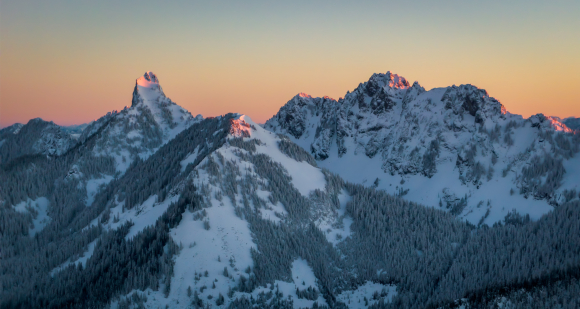
I mean, I guess I am too, but not the same kind of astonished. Just look at the right side of this photo. What in God's name has happened to the side of the mountain?
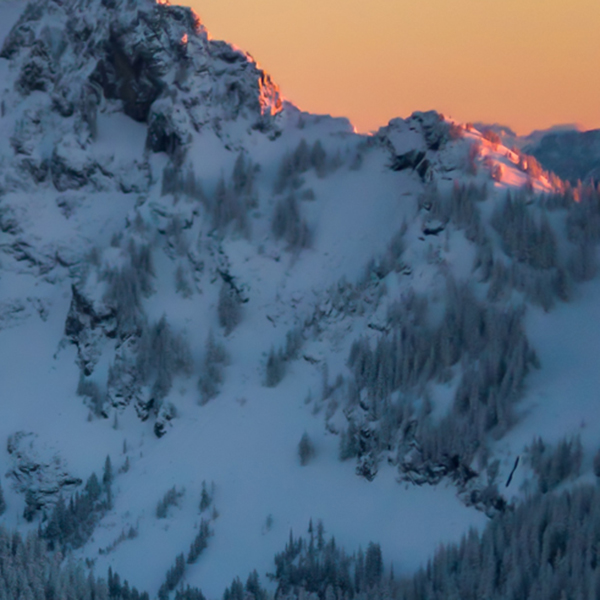
Whatever the L16 is doing to this image, the result is that it looks like the trees are melting. To say that this captures great detail and to expound on how astonished he is at picture quality is just straight up disingenuous. These aren't even the full resolution images and it's clear how incredibly bad the stitching on this image is. All over the mountain there are areas of smudged trees and blotchy patches of macerated rocks.
Feel free to take a look at the rest of the photos on this blog post, but I think I've made my point: The L16's image quality is fragmented and spotty at best, and horrific at worst. You can't become a successful journalist when your equipment is this inconsistent.
For more examples of the L16's awful image rendition, I urge you to read our review. There are plenty of examples therein.
Failure: Quick Turnaround, No Post Production
Part of what makes photojournalism extremely challenging are the time constraints and the rules. If you recall, there have been multiple stories of journalists who are later shamed due to the use of post production software to enhance an image or add subjects in that were never there. Great images, images that go on to win Pulitzers, are powerful due to timing and realism.
We've already seen above how the L16 fails to deliver realistic images, but it's not just there where the camera struggles. In a high-stress, fast turnaround environment, the L16 is painfully slow.
The L16 can only make high quality images once they have been processed through Light's software, Lumen. Lumen is what makes sense of all the camera's individual sensors and creates a final, finished image. Though you can produce in-camera JPEGs, the results are pathetic. The only way to get usable images out of the L16 is to process them in post.
And this does not jibe with the photojournalistic world. Those who strive to achieve in photojournalism dream of winning a Pulitzer. But that may not be possible if you use an L16.
According to pulitzer.org, the only images they deem acceptable as quality journalistic pieces cannot be the subject of post production. With the development of computer-altered photos, the Board stipulated in 1995 that "no entry whose content is manipulated or altered, apart from standard newspaper cropping and editing, will be deemed acceptable."
Adjusting depth of field, focus points, or even stitching multiple images together into one (which is entirely how this camera functions) can be considered in excess of what Pulitzer describes as "editing." In the end, what constitutes too much post production is their call, but they have been extremely strict in the past. In order to make an admissible image using a Light camera, you have to post produce the image in Lumen. But wait, doesn't it do in-camera JPEGs? Well, kinda.
Not only is using Lumen a slow and deliberate process, making quick turnarounds extremely challenging, the camera doesn't even produce large JPEGs naturally. You have to use the camera to specifically export them; it's default JPEGs are worse than cell phone images.
"We’ve seen some photojournalists swap their DSLRs for iPhones to stay inconspicuous in their reporting—but they sacrifice quality to do so."
Below is an example of a default JPEG taken directly from the L16 taken by our lab team. Take a look at it, and tell me with a straight face that this is better than the modern cell phone image.
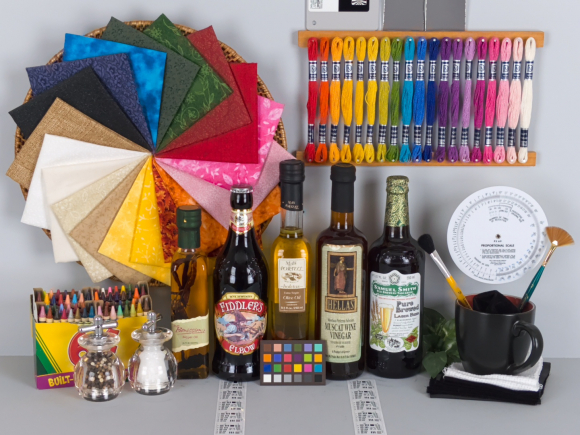
Under no parameters is it better. Even if we process an image and get a full resolution shot, I've already shown that those images are little better. And that should be a problem for Light, as we already discussed what a big point they've made that low-quality images are not acceptable. By their own words, their straight out of camera JPEGs are not the kinds of photos that photojournalists should be lowering themselves to. Hell, their full resolution images are rife with problems.
"Anyone can take a picture, but not everyone can capture one that matters."
Revisiting that first quote from The Depth Collective blog post, I honestly believe in what it's saying. As a creator, I and those like me strive to create great images that leave a lasting impact, and actually help push for positive change in the world.
I want to love what Light and their L16 camera are trying to do here. I really do.
But looking at the images their camera creates, and how cumbersome the device actually is to use as a creator, I'm left feeling like Light is doing this for all the wrong reasons. Claiming to be on the side of photojournalists is only to their benefit because they're hoping to move cameras, cameras that are significantly more expensive now than they were when Light first announced them years ago. I'm passionate about exposing the flaws in this camera because I feel that it's the product of relentless marketing, not the product of an honest-to-goodness love of image making. If it were, then we would see the Light.co team focused more on making better images with their device than pushing out content filled with glowing words from photographers who either don't look carefully at their own images, or don't care how they appear. In either case, why would you want to join up with a brand with the kinds of priorities that Light is showing? It's not about making great images, it's about marketing their camera.
I don't know about you all, but I'm more than just a means to move a company's product. When I pick equipment, I do so because I want it to be the best fit for the job. I don't start with a piece of equipment and try and shoehorn it into the job at hand. That's backwards, and it's exactly what Light is doing with the L16. They essentially said, "we have this small camera with uncertain image quality (but we'll tout it as being great), let's see where it fits." But in the end, the only thing about the L16 that makes it a fit for photojournalists is its size. Everything else about this device straight up sucks at what a photojournalist would need.
And though I could get past the need to use special software and even look beyond the slow process of exporting images, one giant fact sticks out about this camera: The photos just look bad. The L16 takes bad photos, and it's hard to argue that a device that takes bad photos can help make photos that matter. I can't help thinking what I do with a photo that has compositional errors, bad blurring, or otherwise poor aesthetics. When I find that image on my hard drive, I drag it to the trash bin.
I throw it away.